Will vacuum delivery go the way of vaginal breech delivery?
Rising cesarean delivery rates along with inadequate training has largely sidelined vacuum deliveries, even though the procedure has its benefits.
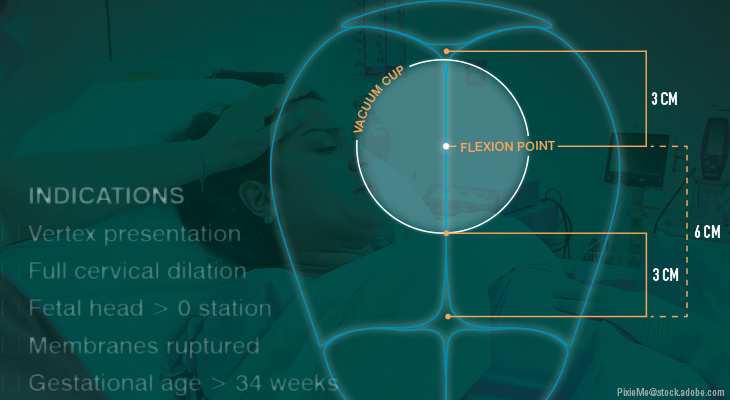
Table 1
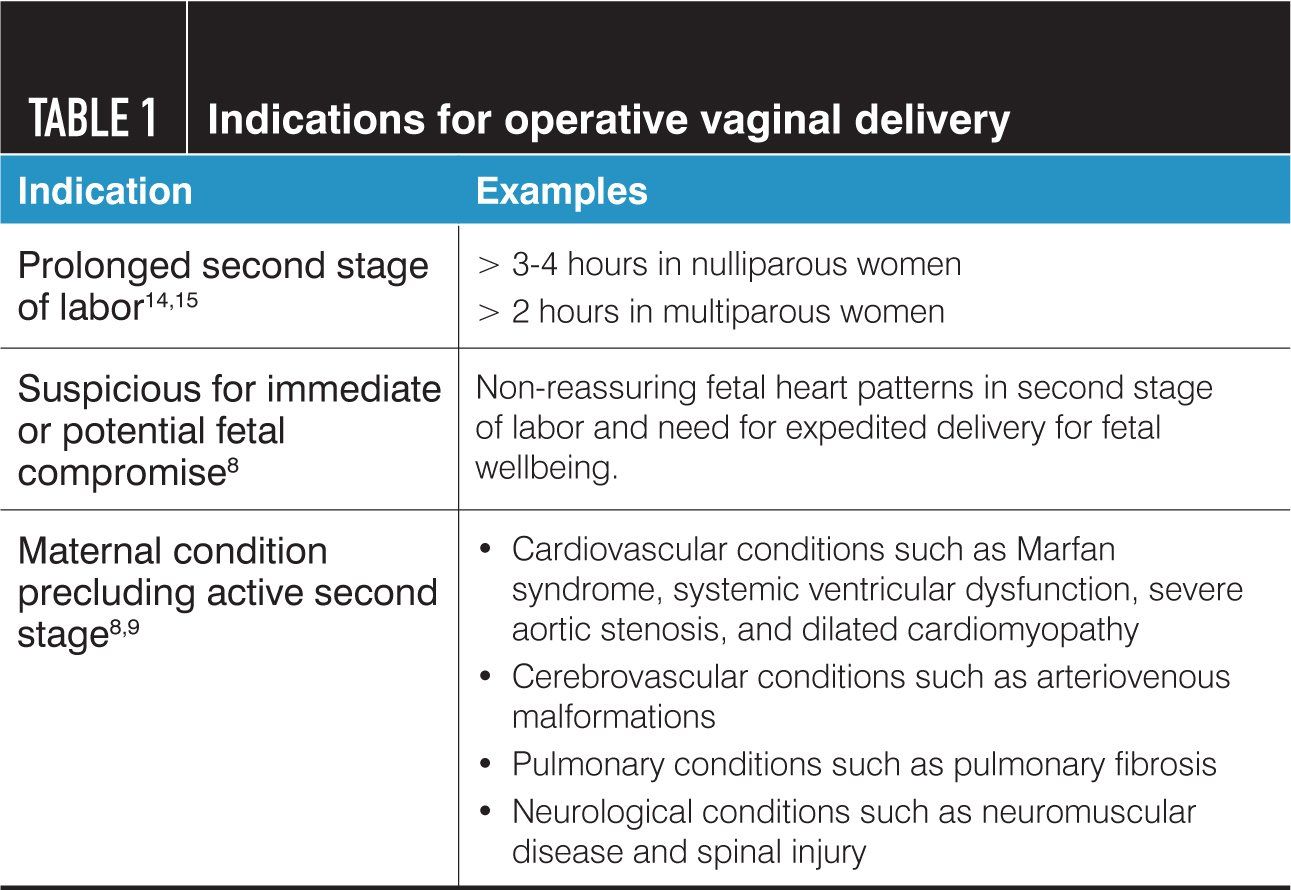
Table 2

Table 3
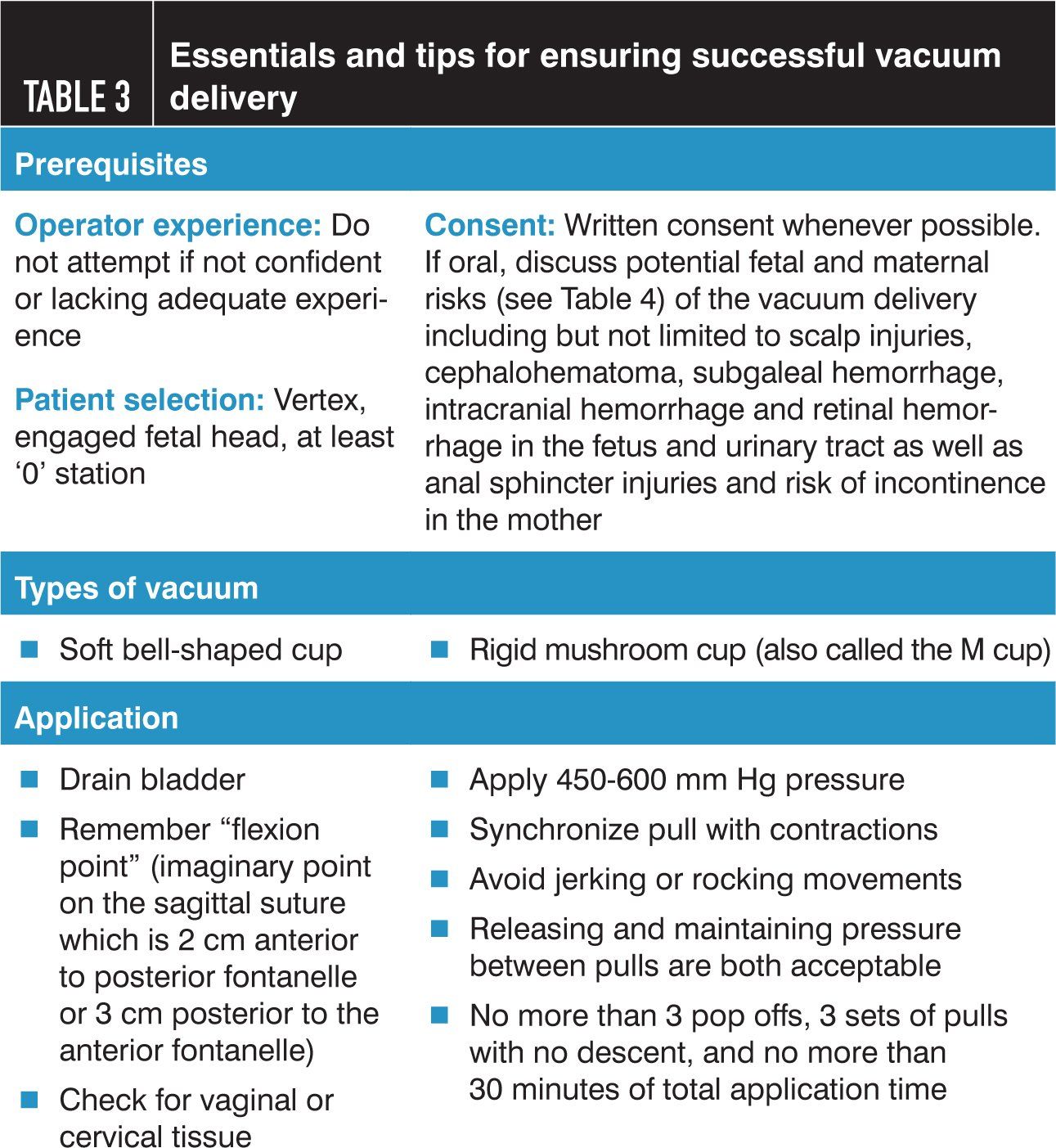
Operative vaginal delivery is an important management option for patients in the second stage of labor whose clinical situation requires expedited delivery. There has been a decreasing trend of using either vacuum or forceps during delivery, which coincides with the increasing rates of cesarean delivery during the past 3 decades.1 Operative vaginal delivery decreases maternal risk of infection and hemorrhage, shortens maternal recovery and length of hospitalization postpartum2 and preserves a woman’s reproductive options by eliminating risks of both vaginal birth after cesarean delivery (VBAC) and abnormal placentation in future pregnancies but operative vaginal delivery also involves risks for both neonatal and maternal complications which includes a two- to six-fold increase in third- and fourth-degree perineal tears depending on the type of operative vaginal delivery.3
The desire to minimize pelvic floor trauma during delivery has resulted in a shift in recent obstetric practice away from use of forceps toward vacuum-assisted vaginal delivery, possibly due to the purported higher rates of obstetric anal sphincter and pelvic floor injury associated with forceps-assisted delivery (8%-23%), compared to vacuum-assisted delivery (6%-9%).4
The decrease in operative delivery rates seen in conjunction with the continued increase in cesarean delivery rates is not likely to reverse unless there is a concerted effort to teach vacuum extraction to residents in training. In addition, many ob/gyns are reluctant to use vacuum extraction because of concerns about anal sphincter and pelvic floor injuries and neonatal complications with their associated risk of litigation.3,5
History
The history of using vacuum to aid vaginal delivery has been described in multiple texts, most notably by J.A. Chalmers in his book “The Ventouse” published in 1971.6 By most accounts, the technique was first attempted unsuccessfully by Dr. James Yonge in 1706.7 In 1849, J.Y. Simpson invented the Air Tractor, which by several accounts could be the first time that a device similar to the modern vacuum was used successfully but it unfortunately failed to gain favor with the medical community.8 More than a century later, a Swedish professor, Tage Malmstrom, developed the Malmstrom extractor and published a series of studies.9 This led to more widespread adoption of the vacuum extractor to aid childbirth. Its adoption in Northern European countries increased in 1970 followed by adoption in the United States.
Indications and contraindications
The first American College of Obstetricians and Gynecologists (ACOG) document on operative vaginal delivery was published in 1991. The document, previously called the Technical Bulletin, has undergone multiple revisions and replacements and was finally replaced by Practice Bulletin Number 154, published in November 2015 and reaffirmed in 2018.10 Since then, indications and contraindications for vacuum delivery have been enumerated in several publications. They are summarized here in Tables 1 and 2.10-13 Table 3 offers tips for ensuring a successful vacuum delivery. Of note, none of these indications is absolute and a cesarean delivery can be offered in all these circumstances.
There is no consensus regarding what is considered adequate analgesia for vacuum delivery. Epidural anesthesia is preferable but absence of an epidural is not a contraindication for vacuum delivery.
Table 4

Controversies
Vacuum vs forceps
One advantage of forceps over vacuum extraction is its higher success rate in achieving a vaginal birth.16 However, forceps deliveries are more likely to result in neonatal facial laceration, instrument marks and bruising, facial nerve palsy, corneal abrasions and external ocular trauma, skull fracture, and intracranial hemorrhage5,10, Maternal complications associated with forceps deliveries include major perineal and vaginal tears, third- and fourth-degree perineal lacerations associated long term with pelvic organ prolapse.8,14,15 Conversely, vacuum extraction can result in fetal scalp laceration, cephalohematoma formation, and subgaleal or intracranial hemorrhage (Table 4).10 Retinal hemorrhages and increased rates of hyperbilirubinemia have also been reported.10
In a 2016 systematic review, Tahtinen et al. found no difference in long-term prevalence of stress urinary incontinence (SUI) between vacuum delivery and spontaneous vaginal delivery.17 A follow-up study of 13,694 women who had experienced a vaginal birth in Norway found that among women aged < 50 years, there was a statistically significant difference in risk of SUI with forceps delivery (odds ratio [OR] 1.42, 95% CI, 1.09-1.86), but not with vacuum delivery (OR 0.80, 95% CI, 0.59-1.09) when compared with spontaneous vaginal delivery. Among women aged < 50 years, forceps deliveries were associated with a higher rate of SUI (OR 1.76, 95% CI 1.20-2.60) when compared to vacuum deliveries. These results supported those of Handa et al.18 who reported, in a retrospective cohort study, that forceps delivery increased odds of all pelvic floor disorders considered, especially overactive bladder (OR 2.92, 95%CI 1.44,5.93) and prolapse (OR 1.95, 95% CI 1.03,3.70). These results may have had an impact on the decreasing numbers of forceps-assisted births seen in low- and middle-income countries.19
In contrast, a recent retrospective cohort study that included all singleton, term, cephalic vaginal deliveries in Kaiser Permanente Northern California between 2013 and 2014 found that women with vacuum-assisted vaginal deliveries had four times the odds of obstetric anal sphincter injury (OR 4.23,95% CI 3.59-4.98) compared to those who did not. In this study, the predominant choice of instrument for operative vaginal delivery was vacuum extraction at 6.2% compared to forceps, which was only 0.4%. Hence, the authors eliminated forceps deliveries from the study. The primary outcome studied was third- or fourth- degree perineal lacerations. This group also noted that women whose second-stage labor lasted 180 minutes vs less than 60 minutes had three times the odds of obstetric anal sphincter injury (OR 3.20, 95% CI 2.62-3.89).5
Pelvic floor disorders
Nygaard et al20 found that approximately 25% of women in the United States had at least one pelvic floor disorder, with the rate almost double in women older than age 80.20 Because the US population aged 65 and older is expected to double between 2010 and 2050,21 this statistic underscores the potential cost to the health care system and the likelihood that a significant part of the population will suffer from such a condition, which will seriously impact quality of life. Blomquist et al followed women annually from their first delivery for up to 9 years looking for evidence of pelvic floor disorders.20 They found that cumulative incidence of each pelvic floor disorder was significantly associated with mode of delivery. Compared with spontaneous vaginal delivery, cesarean delivery was associated with a significantly lower hazard of SUI, overactive bladder (OAB), and pelvic organ prolapse (POP). Indeed, vaginal delivery is associated with an almost two-fold increase in risk of developing SUI, compared with cesarean delivery, with a smaller effect on urgency urinary incontinence (UUI).22 In contrast, operative vaginal delivery was significantly associated with a higher hazard of anal incontinence and POP. There is evidence that 10% to 20% of vaginal deliveries result in levator ani damage that is undetected at the time of delivery,23 the effect of which evolves over decades, resulting in a long latency for symptomatic POP. Damage to the urethral sphincter occurring at vaginal delivery is the etiology of relatively early onset of incontinence disorders after delivery.24
Ramm et al. found that nearly one-fourth (24%) of the women in their study who had undergone a vacuum-assisted delivery incurred obstetric anal sphincter injury (OASIS).5 That is a substantial increase over historically quoted 6% to 9% OASIS rates with vacuum-assisted vaginal delivery and at least equal to the 8% to 23% rates quoted with forceps-assisted vaginal deliveries.5,25 This raises the question of whether the rate of maternal complications is as low with this procedure as previously believed. However, these investigators also noted that duration of second-stage labor was independently associated with obstetric anal sphincter injury, even after controlling for vacuum-assisted vaginal delivery and VBAC.5 Because a longer second stage has become the norm in an effort by the obstetrical community to prevent primary cesarean deliveries, we may find that it has become a risk factor for OASIS.26
Vacuum cup placement
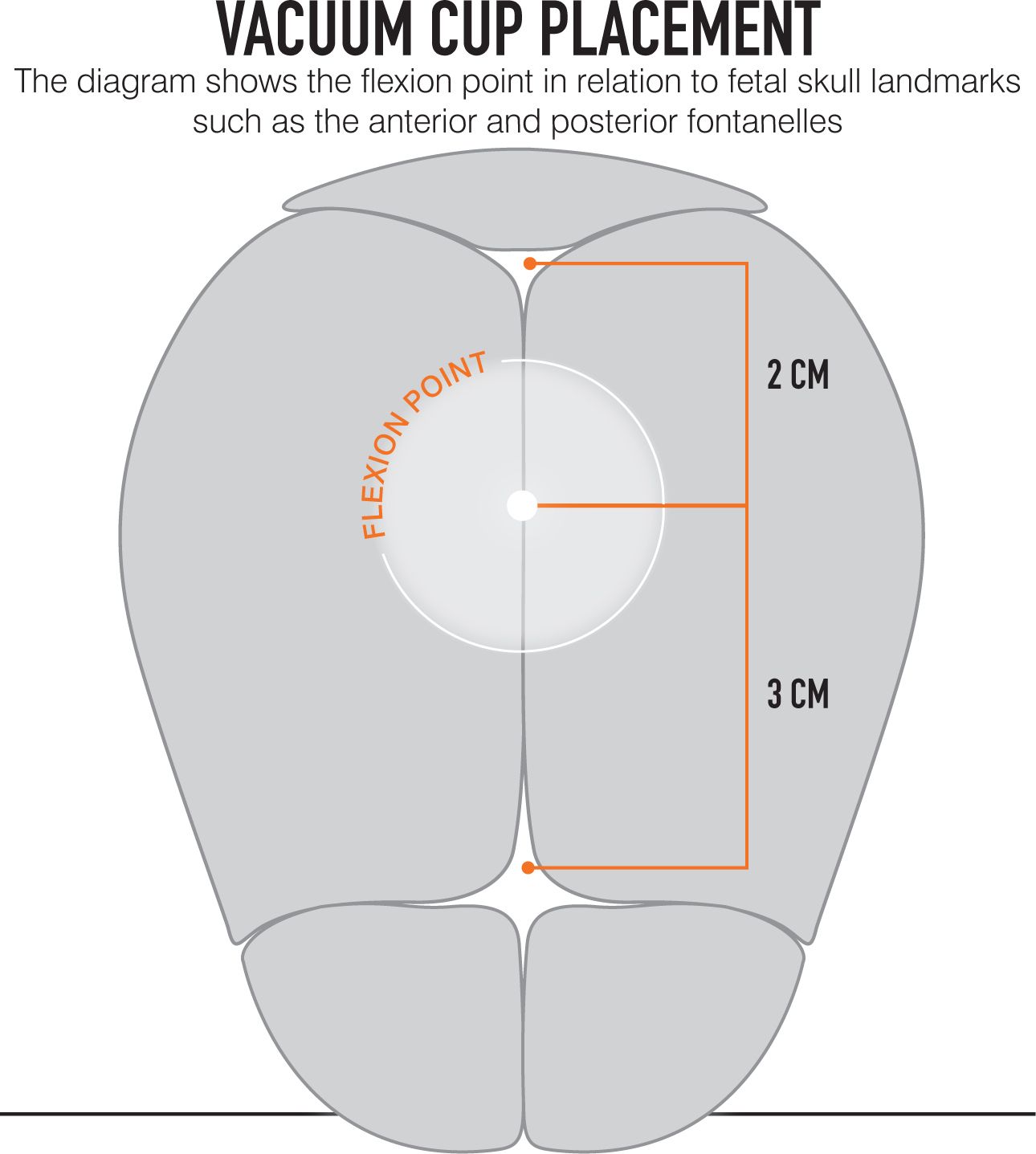
Adequacy of resident training
As long ago as 1996, when operative vaginal deliveries were much more common, a study that surveyed a random sample of 1600 trainees in the United States about their experience of operative vaginal delivery training established that 25% of trainees with
< 10 years of experience had not received training on vacuum extraction during their residency. Despite this, 88% of the same group carried out the procedure regularly.27 Given current use of this modality, we can only surmise how much less experience a recent graduate can be expected to have today, and how much less skill at performing an operative vaginal delivery would be anticipated, possibly resulting in worse maternal and neonatal outcomes than have been reported in the past.
The impact of changes in work hours, attending presence, and involvement in deliveries, and simulation training for these relatively rare obstetrical procedures is unknown. A 2017 survey of Irish and Canadian trainees demonstrated that trainee comfort levels with operative vaginal delivery are positively correlated with numbers performed.28 This did not hold true with trainee self-confidence, suggesting that other factors are involved. (Trainee confidence was assessed based upon their last few forceps deliveries using a modified version of a six-item five-point tool (maximum score out of 30) previously validated for gynecology trainees to measure self-confidence. Measures of trainee comfort were assessed across 13 variables of second-stage assessment, measured on a 5-point Likert scale (1 not very comfortable, 2 not comfortable, 3 neutral, 4 comfortable, 5 very comfortable). A 2007 US survey found that > 90% of residents reported confidence in performing vacuum extraction with 57% reporting confidence in performing a forceps delivery.29 Because the rate of vacuum deliveries peaked at 5.9% of all deliveries in 1995 with a steady decline since then,1 one can only infer that confidence levels would currently be considerably lower than those in 2007, given the actual opportunities available to trainees today to hone their operative delivery skills.
Because the United States has one of the lowest rates of operative vaginal deliveries of all developed countries,1,30 many training programs are developing simulation training as part of their core curriculum to teach residents operative delivery skills. There is some evidence to suggest that local “in-house” simulation training is the most effective.31
Episiotomy with vacuum extraction?
None of the accepted national guidelines, including those from ACOG, the Council of the Society of Obstetricians and Gynaecologists of Canada (SOGC), and the UK’s Royal College of Obstetricians and Gynaecologists (RCOG), have included episiotomy as a mandatory step in vacuum delivery. Rather, the guidelines recommend restrictive use of episiotomy, using the operator’s individual judgement.8,32,33 Unfortunately, indications for this selective procedure are not clearly defined. Numerous studies have noted that episiotomy use is related to increased rates of several obstetric complications, including urinary and anal incontinence, postpartum hemorrhage, and pain.10 This procedure can also be related to a higher, rather than lower, incidence of advanced perineal tears.34 A meta-analysis of episiotomy in vacuum delivery performed by Sagi-Dain and Sagi in 2015 concluded that median episiotomy was related to a higher risk of OASIS in vacuum delivery in nulliparous women (OR 5.11, 95% CI 3.23-8.08) as well as parous women (OR 89.4, 95% CI 11.8-677.1).32 Their findings suggest that midline and mediolateral episiotomy in parous women may increase risk of advanced perineal tears at vacuum delivery, but that lateral episiotomy in nulliparous women appears to be associated with a decreased risk of OASIS. Mediolateral episiotomy may increase risk of postpartum hemorrhage and pain.
Vacuum extraction in LBW neonates
That the patient should be over 34 weeks and the estimated fetal weight should be over 2500 g for vacuum extraction is generally accepted.10 However, in the mid-1990s, both Morales et al and Thomas and associates showed no significant differences in neonatal outcomes in vacuum extractions among preterm infants with weights below 2500 g and 2000 g, respectively.35,36 In 2017, Aviram et al. again studied this group of neonates and found no increase in birth injury in neonates.37
Long-term neonatal complications
Known complications of operative vaginal deliveries may be related to the complicated labor, rather than the procedure used to effect the delivery. Fetal size greater than 4000 g can play a part,38 as can a prolonged second stage.5
Operative vaginal delivery was associated with a rate of neonatal encephalopathy of 4.2 per 1000 term neonates compared with 3.9 per 1000 delivered by cesarean section.39 Another study that compared vacuum extractions, cesarean deliveries and spontaneous vaginal deliveries showed that the rate of intracranial hemorrhages (both traumatic and non-traumatic) was more than six times greater among newborns delivered by vacuum extractions (19.0 per 10,000) and more than double that for those born by cesarean (7.3 per 10,000) compared with infants born by spontaneous vaginal delivery (2.8 per 10,000). Even after adjusting for indication for operative delivery and other covariates, these newborns had a 10-fold risk for traumatic hemorrhages and more than double the risk for non-traumatic hemorrhages.40 However, long-term outcomes in children in Sweden delivered by vacuum extraction suggest that cognitive outcomes in this group are about equal to those delivered by unplanned cesarean delivery. In Australia, children were evaluated at age 8 and Hsieh et al. found that in singleton children born at term, instrumental delivery did not appear to have an adverse effect on neurodevelopment.41
Discussion
In the future, if women decide to have fewer children, tend to live longer, and expect a higher quality of life in older age, long-term consequences of vaginal and cesarean deliveries will have to be considered. Shared decision-making should become the norm. The physician–patient discussion in a problematic second stage will include discussion of immediate and long-term surgical risks due to cesarean section, balanced against risks of short- and long-term sequelae of anal sphincter and pelvic floor injuries related to an operative vaginal delivery. These conversations are complicated at any time and might better be addressed prior to the onset of labor.
If we are to continue to offer vacuum deliveries as an alternative to cesarean deliveries for maternal or fetal complications in the second stage, we must be assured that our residents are adequately trained in the technique. At a time when experienced attending physicians skilled in forceps deliveries are rare, “on-the-job” training from these individuals may no longer be an option. Because use of vacuum extraction has had greater acceptance than forceps delivery due to the belief that less damage to the perineum is involved, and is perceived as an easier skill to acquire, there are still some opportunities for a resident to practice under the guidance of an experienced practitioner. However, simulation systems designed to practice vacuum extractions will increasingly need to be utilized to compensate for currently low numbers of this type of delivery.42
We need to consider the possibility that operative delivery in general, rather than the instrument itself, is associated with OASIS and other pelvic floor injuries.3 It may be that a prolonged second stage, which is increasingly common in modern obstetric management, is also implicated in increased incidence of these complications as noted by Ramm et al.3
It is possible that whenever a procedure is necessary to effect prompt delivery, whether operative or cesarean delivery, in the second stage, there will often be some sequelae that may affect the mother, the neonate or both simply due to the fact that the labor is abnormal. Therefore, an appropriate discussion with the patient about the likelihood of success and potential risks involved in the recommended procedure is imperative.
References:
- Martin JA, Hamilton BE, Osterman MJK, Driscoll AK, Drake P. Births: Final data for 2017. National Vital Statistics Reports; vol 67 no 8. Hyattsville, MD: National Center for Health Statistics. 2018.
- Mohamed-Ahmed O, Hinshaw K, Knight M. Operative vaginal delivery and post-partum infection. Best Pract Res Clin Obstet Gynaecol. 2019 Apr;56:93-106.
- Gurol-Urganci I, Cromwell D, Edozien L, Mahmood T, Adams E, Richmond D, Templeton A, van der Meulen J. Third- and fourth-degree perineal tears among primiparous women in England between 2000 and 2012: time trends and risk factors. BJOG 2013;120:1516–1525
- Ramm O, Woo VG, Hung YY, Chen HC, Ritterman Weintraub ML.. Risk factors for the development of obstetric anal sphincter injuries in modern obstetric practice. Obstet Gynecol. 2018;131(2):290-296.
- Johnson JH, Figueroa R, Garry D. Immediate maternal and neonatal effects of forceps and vacuum-assisted deliveries. Obstet Gynecol. 2004 Mar. 103(3):513-518.
- Chalmers JA. The ventouse. The obstetric vacuum extractor. Chicago: Yearbook Medical Publisher, 1971.
- Hibbard B. The obstetrician’s armamentarium- historical obstetric instruments and their inventors. San Anselmo, CA: Norman Publishing, 2001
- Eustace D. James Young Simpson: the controversy surrounding the presentation of his Air Tractor (1848-1849). J Royal Soc Medicine. 1993 Nov;86(11):660-663.
- Malmstorm T. The vacuum extractor, an obstetrical instrument. Acta Obstet Gynecol Scand. 1957. Supplement.
- Bulletins-Obstetrics, C.o.P., ACOG Practice Bulletin No. 154: Operative Vaginal Delivery. Obstet Gynecol. 2015;126(5):e56-e65.
- Unzila A, Ali M. Norwitz ER. Vacuum-assisted vaginal delivery. Rev Obstet Gynecol. 2009;2:15-17.
- Garrison AM. Vacuum extraction. [Accessed March7th, 2019]. Medscape Website https://emedicine.medscape.com/article/271175-overviewMeeM
- Greenberg JA. Procedure for vacuum assisted operative vaginal delivery. [Accessed February 3, 2009]. UpToDate http://www.uptodate.com/patients/content/topic.do?topicKey=~cWABY9RJfJlwne
- Cheng YW, Hopkins LM, Caughey AB. How long is too long: Does a prolonged second stage of labor in nulliparous women affect maternal and neonatal outcomes?. Am J Obstet Gynecol. 2004 Sep. 191(3):933-8
- Cheng YW, Hopkins LM, Laros RK Jr, Caughey AB. Duration of the second stage of labor in multiparous women: maternal and neonatal outcomes. Am J Obstet Gynecol. 2007 Jun. 196(6):585.e1-6
- O’Mahony F, Hofmeyr GJ, Menon V. Choice of instruments for assisted vaginal delivery. Cochrane Database Syst Rev. 2010(11):CD005455.
- Tahtinen RM, Cartwright R, Tsui JF, et al. Long-term impact of mode of delivery on stress urinary incontinence and urgency urinary incontinence: a systematic review and meta-analysis. Eur Urol. 2016;70(1):148-158.
- Handa VL, Blomquist JL, McDermott KC, Friedman S, Muñoz A. Pelvic floor disorders after vaginal birth: effect of episiotomy, perineal laceration, and operative birth. Obstet Gynecol. 2012;119(2 Pt 1): 233-239.
- Bailey PE, Roosmalen J, Mola G, Evans C, Bernis L, Dao B. Assisted vaginal delivery in low and middle income countries: an overview. BJOG. 2017;124(9):1335-1344.
- Nygaard I, Barber MD, Burgio KL, et al. Prevalence of symptomatic pelvic floor disorders in US women. JAMA. 2008;300(11):1311-1316.
- Vincent GK, Velkoff VA. The Next Four Decades. The Older Population in the United States: 2010 to 2050, Current Population Reports, P25-1138, U.S. Census Bureau, Washington, DC.
- Tähtinen RM, Cartwright R, Vernooij R, et al. Long-term risks of stress and urgency urinary incontinence after different vaginal delivery modes. Am J Obstet Gynecol. 2019;220(2):181 e1-181 e8.
- DeLancey JO, Kearney R, Chou Q, Speights S, Binno S. The appearance of levator ani muscle abnormalities in magnetic resonance images after vaginal delivery. Obstet Gynecol. 2003;101(1): 46-53.
- Blomquist JL, Muñoz A, Carroll M, Handa VL. Association of delivery mode with pelvic floor disorders after childbirth. JAMA. 2018;320(23):2438-2447.
- Landy HJ, Laughon SK, Bailit JL, et al. Characteristics associated with severe perineal and cervical lacerations during vaginal delivery. Obstet Gynecol. 2011;117(3):627-635.
- American College of Obstetricians and Gynecologists, Caughey AB, Cahill AG, Guise J-M, et al., Safe prevention of the primary cesarean delivery. Am J Obstet Gynecol. 2014;210(3):179-193.
- Bofill JA, Rust OA, Perry KG, Roberts WE, Martin RW, Morrison JC. Operative vaginal delivery: a survey of fellows of ACOG. Obstet Gynecol. 1996;88(6):1007-1010.
- Crosby DA, Sarangapani A, Simpson R, Windrim A, Satkunaratnam M, Higgins F. An international assessment of trainee experience, confidence, and comfort in operative vaginal delivery. Ir J Med Sci. 2017;186(3):715-721.
- Powell J, Gilo N, Foote M, Gil K, Lavin JP. Vacuum and forceps training in residency: experience and self-reported competency. J Perinatol. 2007;27(6):343-346.
- Macfarlane AJ, Blondel B, Mohangoo AD, et al. Wide differences in mode of delivery within Europe: risk-stratified analyses of aggregated routine data from the Euro-Peristat study. BJOG. 2016;123:559-568.
- Siassakos D, Crofts JF, Winter C, Weiner CP, Draycott TJ. The active components of effective training in obstetric emergencies. BJOG. 2009;116(8):1028-1032.
- Sagi-Dain L, Sagi S. Morbidity associated with episiotomy in vacuum delivery: a systematic review and meta-analysis. BJOG. 2015;122(8):1073-1081.
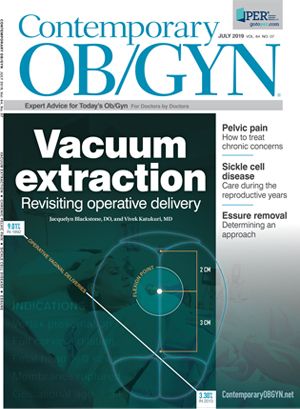
S1E4: Dr. Kristina Adams-Waldorf: Pandemics, pathogens and perseverance
July 16th 2020This episode of Pap Talk by Contemporary OB/GYN features an interview with Dr. Kristina Adams-Waldorf, Professor in the Department of Obstetrics and Gynecology and Adjunct Professor in Global Health at the University of Washington (UW) School of Medicine in Seattle.
Listen
Study shows a healthy prenatal diet could be upstream obesity prevention strategy
December 26th 2024"Our findings support the recommendation of a healthy diet based on the current guidelines (as measured by the HEI) during pregnancy, since it may reduce patterns of infant growth outside reference ranges."
Read More
Early pregnancy cannabis use high in states with recreational legalization
November 11th 2024A population-based time-series analysis California before, during and after legalization show a rising trend in women using cannabis while pregnancy especially when the state has legalized the drug.
Read More
